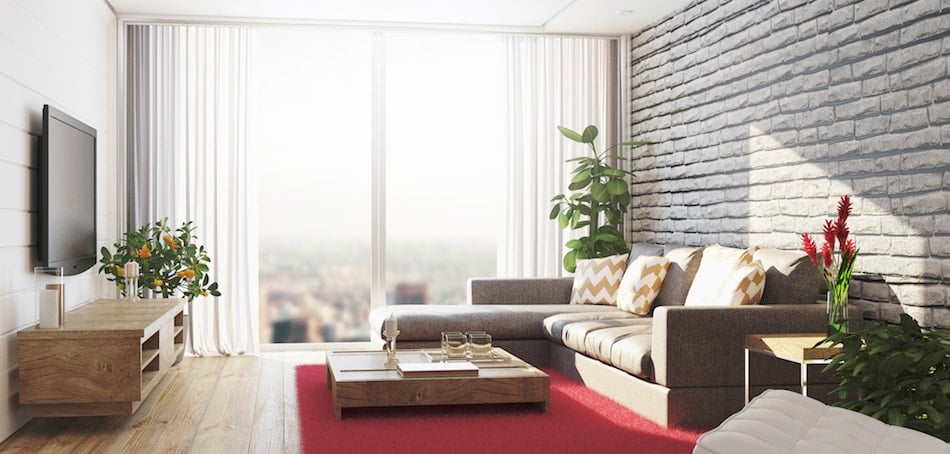
Inexpensive Ways to Stage Homes for a Better Sale
 Imagine this: You’re a buyer and you walk into a home with your real estate agent. Upon entering the house, you discover a trail of toys scattered from one room to another, a basement full of half-packed boxes, and a smelly kitchen. The bedrooms had unmade beds and full closets, and family photos covered the walls. And the owner is still in the house, making you feel rushed to get in and out.
Imagine this: You’re a buyer and you walk into a home with your real estate agent. Upon entering the house, you discover a trail of toys scattered from one room to another, a basement full of half-packed boxes, and a smelly kitchen. The bedrooms had unmade beds and full closets, and family photos covered the walls. And the owner is still in the house, making you feel rushed to get in and out.
To say the least, you may not be able to picture yourself living in that house after walking through it. Staging makes a world of difference, and can be the difference between a buyer taking a second look at your home or running away as soon as they can.
Why Staging Is Important
Obviously, one of the biggest mistakes when showing your home is to be inside during the showing. That makes both agents and buyers uncomfortable. But it’s equally obvious that showings are stressful for sellers, especially those with little money for a housekeeping service or professional staging.
The idea of spending time or money on staging may seem ridiculous to some, as it is not always apparent what kind of impact it makes. However, examples in everyday life abound showing that de-cluttering and rearranging the contents of a house’s rooms seem to speed up sales and increase the purchase price.
Picture your dream home buying experience (Camden homes for sale, perhaps?) – is it clean, well organized, and free of random clutter when you visit it for the first time? Or is it lazily thrown together at the last minute, with signs that people are still living in it? Putting buyers in the right frame of mind is insurance that you don’t miss out on someone who might otherwise be interested in asking more about your home.
Examples of Staging Success
In January 2016, The New York Times reported on property owners who spent $45,000 updating their apartment — including new flooring and light fixtures — but didn’t seek professional staging. Six months after listing, their property remained on the market, so they dropped the price by $200,000 but it still didn’t sell. Taking the property off the market, they brought in a stager who cleaned up their eclectic décor into a sleek Eurostyle look.
When re-listed at a price even lower than the previously discounted posting, the result was a bidding war raising the sale within $5,000 of the original asking price.
Another surprising example of staging success was in 2008 at the peak of the Great Recession. Toronto stager Debra Gould showed a number of her jobs that helped customers sell at prices close to their asking price during the recession’s real estate downturn. These successes included listings Gould staged after they were already on the market overlong. Simple actions she took included:
- Refreshing a front entry with new lamps and a more dramatic paint job
- Slightly rearranging furniture and removing many boxes of toys and clutter from a parlor
- Helping homeowners who left their house feeling “naked” after stripping it of furnishings by adding interesting objects — such as steamer trunks — from among the owners’ possessions
Many stagers’ ideas are ones that do-it-yourselfers can easily follow.
DIY Tips for Inexpensive Staging
Professional staging can cost up to $150 per hour. If you want to avoid those costs when selling your Minneapolis area home, here are some low-cost ways homeowners can do some valuable staging themselves.
- Remove Photos and Mementos: Pack up personal items, such as photos, because they distract buyers who are trying to imagine themselves in the home.
- Clean up Toys and Counter Clutter: Remove clutter from counters, shelves and drawers so buyers can clearly see the bones of the house. If you have children with lots of toys, pack up many of them so they have fewer to strew about the house. Box it all and stack in a corner of the garage leaving space for visitors to view that room. It may be helpful to ask a friend or relative to store your items.
- Paint and Rearrange: Freshen up the paint in rooms that need it most. Rearrange closets, getting rid of clothing and shoes you likely will never wear again. Make sure the purpose of each room is apparent and useful.
- Clean Surfaces and Appliances: Clean and deodorize the house like never before. Spending money on housekeeping services and window washing just before and during listing is one investment you may want to consider. To sweeten the kitchen air, bake cookies or warm up a bit of vanilla in the oven.
- Create Curb Appeal: Mow the grass, spread mulch, invest in a quality leaf blower and plant pretty flowers if the season is right. During the fall and winter months, tidy up garden beds.
Anyone on a limited budget who lives in a house they are trying to sell knows how taxing the process can be. But you don’t need to make it harder on yourself by avoiding any kind of staging. It will take time, but it is certainly worth it to make your home presentable to buyers.



